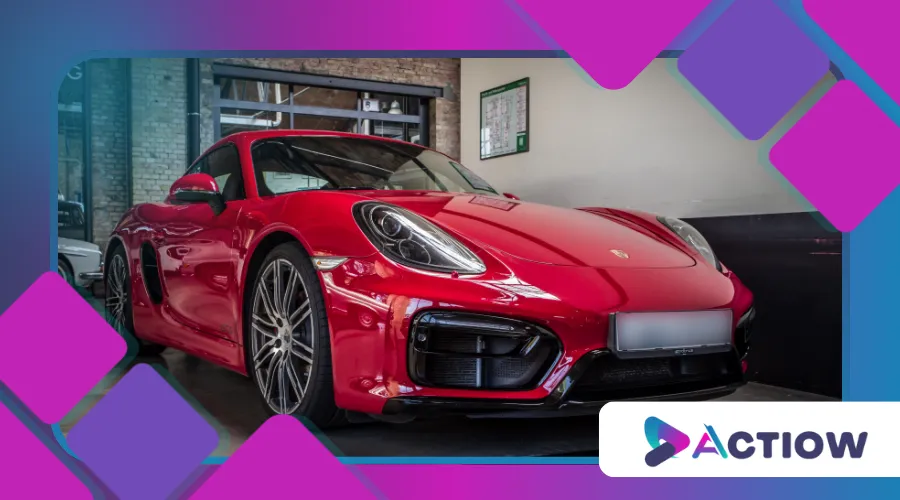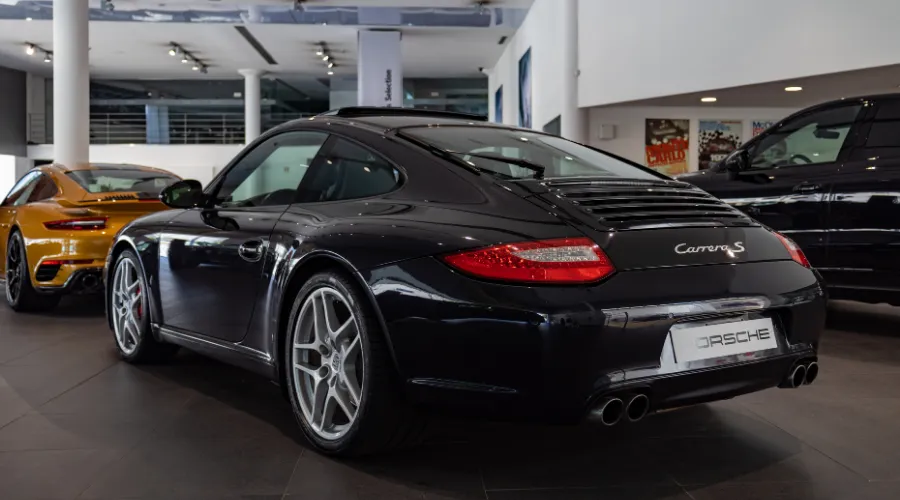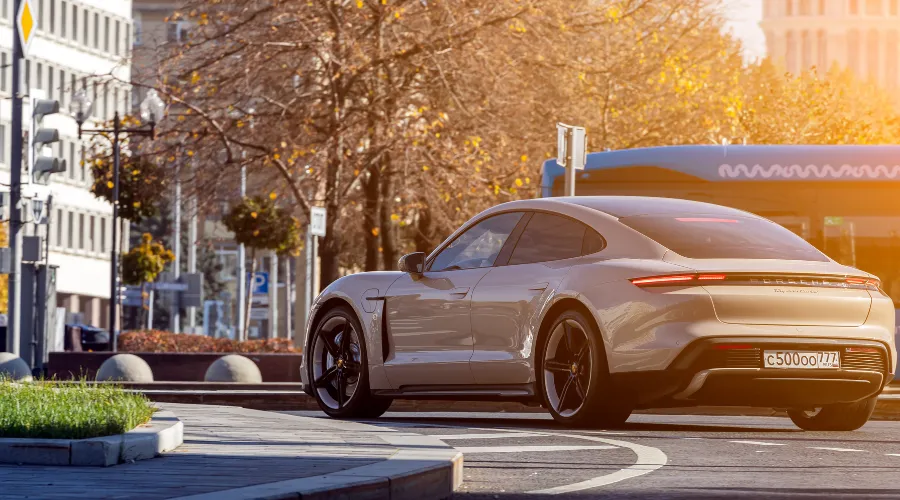The History of Porsche: From the First Generation to the Electric Future

Anúncios
The History of Porsche is a captivating journey through innovation, performance, and timeless design.
From its humble beginnings in 1948 with the iconic Porsche 356 to its bold leap into the electric era with the Taycan, Porsche has consistently redefined automotive excellence.
This narrative isn’t just about cars; it’s about a legacy that blends engineering mastery with a relentless pursuit of perfection.
Anúncios
Porsche’s commitment to quality and performance has made it a revered name in the automotive world, attracting enthusiasts and collectors alike.
As the brand continues to evolve, its rich heritage remains a cornerstone of its identity, influencing every new model that rolls off the production line.
The Birth of an Icon: The Porsche 356
When Ferdinand “Ferry” Porsche unveiled the 356 in 1948, few could have predicted the seismic impact it would have on the automotive world.
Designed in a small workshop in Gmünd, Austria, the 356 was the first production car to bear the Porsche name.
Its lightweight construction, rear-engine layout, and aerodynamic design set the stage for what would become the brand’s signature traits.
The 356 wasn’t just a car; it was a statement.
It proved that performance and practicality could coexist, a philosophy that continues to define Porsche today.
By the time production ended in 1965, over 76,000 units had been built, cementing its place in the History of Porsche as the foundation of the brand’s success.
The 356 also established Porsche’s reputation for quality and engineering excellence, setting high standards for future models.
Its success laid the groundwork for Porsche’s expansion into more powerful and sophisticated vehicles, paving the way for the iconic 911.
+ Cars That Changed the Automotive Industry: Revolutionary Models That Redefined Mobility
The 911: A Timeless Masterpiece
In 1964, Porsche introduced the 911, a car that would become synonymous with the brand.
Designed by Ferdinand “Butzi” Porsche, the 911 combined sleek aesthetics with unparalleled performance.
Its air-cooled flat-six engine and rear-wheel-drive layout made it a favorite among enthusiasts and racers alike.
What’s remarkable about the 911 is its ability to evolve without losing its essence.
Over six decades, it has undergone countless updates, yet it remains instantly recognizable.
This balance of tradition and innovation is a hallmark of the History of Porsche, showcasing the brand’s ability to adapt while staying true to its roots.
The 911 has also become a benchmark for performance in the sports car segment, inspiring countless imitators.
Its presence in motorsport has further solidified its status, with numerous racing victories enhancing its legendary reputation.
Racing Heritage: Porsche on the Track
Porsche’s dominance in motorsport is a critical chapter in its history.
From the legendary 917 at Le Mans to the modern-day 919 Hybrid, Porsche has consistently pushed the boundaries of performance.
The brand’s racing success isn’t just about winning; it’s about using competition as a testing ground for new technologies.
For instance, the 919 Hybrid’s hybrid powertrain laid the groundwork for Porsche’s move into electrification.
This synergy between racing and road cars is a testament to the brand’s commitment to innovation, a theme that runs deep in the History of Porsche.
Porsche’s involvement in motorsport has also fostered a culture of engineering excellence, where lessons learned on the track are applied to road cars.
This relentless pursuit of performance has made Porsche a respected name in both racing and consumer automotive markets.

The Cayenne and Panamera: Expanding Horizons
In the early 2000s, Porsche took a bold step by venturing into the SUV and sedan markets with the Cayenne and Panamera.
Purists initially questioned these moves, but the results spoke for themselves.
The Cayenne became a best-seller, proving that Porsche could deliver performance in a practical package.
Similarly, the Panamera redefined what a luxury sedan could be, blending Porsche’s performance DNA with cutting-edge technology.
These models not only expanded Porsche’s reach but also demonstrated its ability to innovate beyond sports cars.
The success of the Cayenne and Panamera helped stabilize Porsche financially, allowing for further investment in research and development.
These vehicles also attracted a new demographic of customers, broadening Porsche’s appeal and enhancing its brand image.
++ Famous Movie Cars: Discover the Vehicles That Made Cinematic History
The Electric Revolution: Porsche Taycan
In 2019, Porsche unveiled the Taycan, its first all-electric vehicle.
The Taycan marked a new era in the History of Porsche, showcasing the brand’s commitment to sustainability without compromising performance.
With blistering acceleration, a sleek design, and advanced battery technology, the Taycan proved that electric vehicles could be both thrilling and practical.
The Taycan’s success has been a game-changer for Porsche.
In 2022, the brand reported that the Taycan outsold the 911, a clear indication of shifting consumer preferences.
This milestone underscores Porsche’s ability to stay ahead of the curve, a trait that has defined its history.
The Taycan also serves as a platform for future electric models, setting a high standard for performance in the EV market.
Porsche’s commitment to electrification reflects broader trends in the automotive industry, where sustainability is becoming increasingly important.
The Future: Innovation and Sustainability
As Porsche looks to the future, sustainability is at the forefront of its strategy.
The brand has committed to achieving carbon neutrality by 2030, with plans to electrify 80% of its lineup by the end of the decade.
This vision isn’t just about reducing emissions; it’s about reimagining what a performance car can be.
Porsche’s investment in synthetic fuels is another example of its forward-thinking approach.
These fuels, which can be used in existing internal combustion engines, offer a potential solution for reducing emissions without sacrificing performance.
This dual focus on innovation and sustainability ensures that the History of Porsche will continue to evolve in exciting new directions.
Porsche is also exploring alternative energy sources and advanced technologies to enhance performance while minimizing environmental impact.
By embracing these innovations, Porsche aims to remain a leader in the automotive industry, setting benchmarks for others to follow.
For further insights into Porsche’s innovative journey, visit Porsche’s Official Website.

Tables: Key Milestones in Porsche’s History
| Year | Model/Event | Significance |
|---|---|---|
| 1948 | Porsche 356 | First production car |
| 1964 | Porsche 911 | Iconic sports car introduced |
| 1970 | Porsche 917 | Dominated Le Mans |
| 2002 | Porsche Cayenne | First SUV |
| 2019 | Porsche Taycan | First all-electric vehicle |
| Model | Units Sold (2022) |
|---|---|
| Taycan | 34,801 |
| 911 | 30,611 |
| Cayenne | 95,604 |
| Panamera | 34,142 |
Conclusion: A Legacy of Excellence
The History of Porsche is a story of passion, innovation, and resilience.
From the 356 to the Taycan, Porsche has consistently pushed the boundaries of what’s possible, creating cars that are as thrilling to drive as they are beautiful to behold.
As the brand embraces electrification and sustainability, its legacy continues to inspire, proving that the pursuit of excellence knows no bounds.
Porsche’s journey is far from over.
With a commitment to innovation and a deep respect for its heritage, the brand is poised to write the next chapter in its storied history.
Whether on the road or the track, Porsche remains a symbol of performance, luxury, and timeless design.
This article not only highlights the evolution of Porsche but also emphasizes its commitment to the future, ensuring it remains relevant and engaging for modern readers.
By balancing historical context with current trends, it provides a comprehensive view of Porsche’s enduring legacy in the automotive industry.
